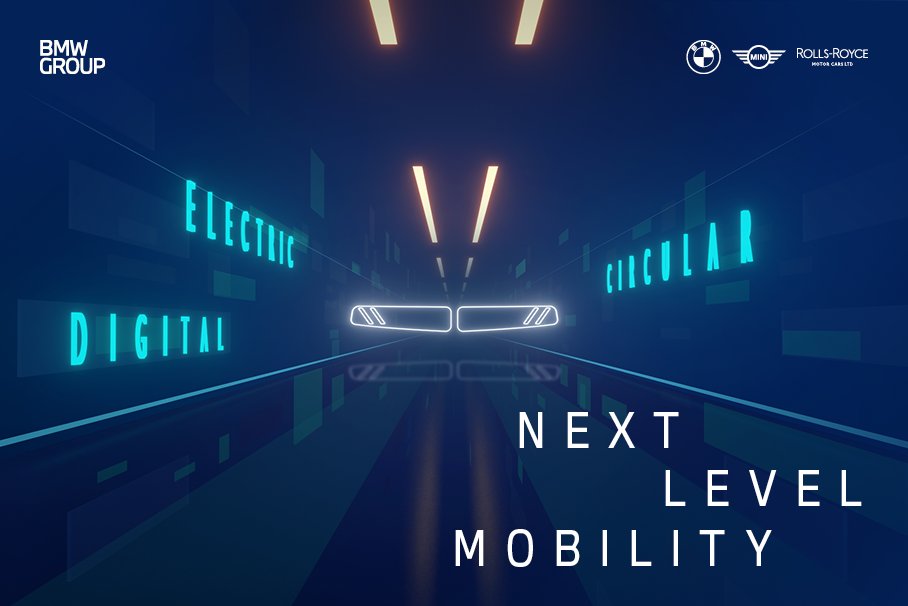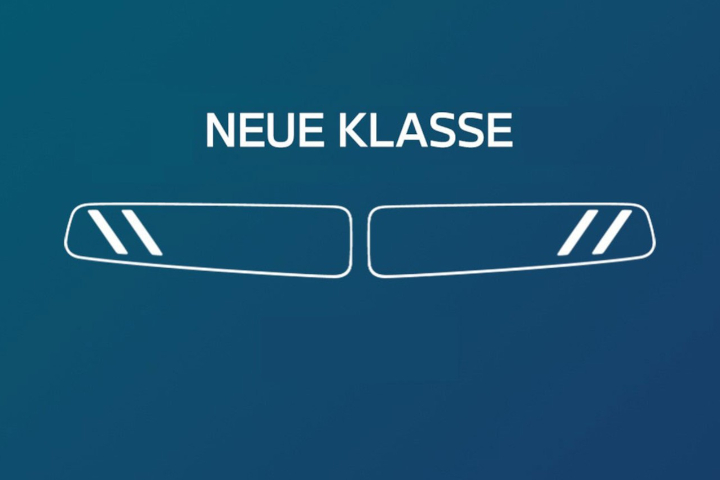circular economy.
The BMW Group views the circular economy as a key approach for designing more resource-efficient vehicles. The idea is to find the best way to keep materials in the cycle – ensuring resources are not lost, but retain their value for long-term use. This opens up an array of opportunities for the whole industry, the automotive sector and the BMW Group: Reusing valuable resources in this way can reduce our dependence on critical primary raw materials. It also makes us less dependent on rising raw material prices. What is more, the use of high-quality secondary materials significantly reduces our vehicles’ carbon footprint.
Based on this diverse potential, the BMW Group has defined circularity as a strategic focus area. Our aim is to gradually bring the company closer to the ideal of the circular economy. From raw materials to recycling, we have the entire value chain in our sights – from Design for Circularity and increasing use of secondary materials for parts and components, all the way to effective recycling of end-of-life vehicles. We are also investing through our own venture capital fund, BMW i Ventures, in start-ups that are forging ahead with a wide variety of circularity solutions.
The future is circular.
The future of the BMW Group is circular – and the NEUE KLASSE brings us another step closer to this objective. To achieve this, we are applying the principles of the circular economy even more systematically throughout the entire lifecycle of the future vehicle generation.
Chairman of the Board of Management of BMW AG
Our vision.
As a vision vehicle, our BMW i Vision Circular embodies how we imagine the recyclable car of the future. Circularity is the basic idea running through all aspects of the vehicle creation process – starting with the design, where the number of components and materials is reduced to a minimum. At the same time, the design is optimised for closed-loop material cycles – which means the vision vehicle is built from 100-percent recycled or bio-based materials and is fully recyclable.
Circularity and digitalisation complement each other in the BMW i Vision Circular – for example, with digitally augmented and smart interior surfaces to replace conventional operating controls. From 2025 on, the NEUE KLASSE will take the circular approaches of the BMW i Vision Circular and put them into practice.
Circular Economy at the BMW Group.
Design & development.
Circularity begins with how we think about our vehicles. Here, we are increasingly relying on the principle of Design for Circularity: Products should be designed in such a way that materials can be recycled at the end of a vehicle's life – and increasingly used for the same purpose or even in situations that demand higher quality.
Efficient disassembly and use of fewer different material groups – preferably mono-materials – are crucial for high recyclability. Digitalisation also presents an opportunity to use fewer materials overall. For example, by creating digital surfaces, we can reduce the number of manual operating controls in the vehicle.
Certain BMW Group vehicles also utilise renewable raw materials and natural fibres such as hemp, kenaf and flax. This not only replaces the use of finite raw materials, but also lowers the vehicle’s weight and improves its carbon footprint.
Supply chain & production.
Our “Secondary First” approach aims to increase the percentage of high-quality secondary materials in our vehicles over time. These generally generate lower CO2 emissions and, at the same time, reduce our dependence on critical raw materials. We are working closely with our suppliers to ensure these materials are available in sufficient quantities and quality – supported by the cross-sector data ecosystem Catena-X. Market participants can use this platform to share all relevant data for the circular economy – ensuring a more efficient, circular flow of materials.
Our global production network is already a model of resource efficiency. We began gradually making our vehicle production more resource-efficient early on. Year after year, we have been able to reduce the volume of waste per vehicle, as well as our water and energy consumption. We collect used resources that did not make it into the vehicle and feed them back into the cycle. For this, we rely on recycling concepts that are tailored to waste flows at the plants, the region’s legal requirements and the disposal structures available at the site.
With the BMW iFACTORY – our global strategy for efficient, more environmentally-compatible and digital production – we are taking the next step towards circular production. This includes advancing digital sorting of production waste.
Use phase.
Our high quality standards ensure that our vehicles generally have a long "life". They are often driven by customers for more than 20 years, supported by the established global used car market and the international network of BMW Group retail organisations, which offer extensive services to maintain the vehicles. The BMW Group Dynamics Centre in Dingolfing ships original new parts to customers around the world for at least 15 years after a model is phased out. The parts always come in resource-efficient packaging – for example, using recycled paper. As part of our Encory joint venture, for example, we are also working to bring vehicle components back into the cycle.
Disassembly & recycling.
We do not consider end-of-life vehicles as waste to be disposed of, but as a source of secondary raw materials. That is why the BMW Group is committed to reintroducing end-of-life vehicles, components and materials into the raw materials cycle. The BMW Group and its National Sales Companies offer environmentally-friendly recycling at more than 2,800 recovery centres in 30 countries. This is possible because materials from our vehicles can be almost entirely reused or recycled – in compliance with the European Union's legal requirements.
The BMW Group has had its own Recycling and Dismantling Centre (RDZ) since 1994, where we recover several thousand vehicles every year – including many from the development fleet. In this way, materials can be returned to the cycle as secondary raw materials. Components that still meet our quality standards are prepared for reuse. The RDZ also provides us with important findings for efficient disassembly and recycling processes. We not only leverage these insights in-house, but also share them with all relevant parties in the recycling industry. At the same time, this know-how is channelled back into the design process to make future vehicles even more recyclable.
We are also investing in new ideas for effective recycling through our own venture capital fund, BMW i Ventures. The start-up PureCycle, for instance, uses an innovative process for recycling polypropylene – an essential component for vehicles.
KEY FIGURES RESOURCE EFFICIENCY.
BMW Group production is characterised by a very strong commitment to conserving resources. In numbers, this means that, thanks to the measures implemented, we have, for example, been able to reduce the amount of non-recyclable waste, as well as water consumption per vehicle, year after year. We recycle and recover almost all our production waste.
Recycling and recovery.
-
99.3 %
-
99.2 %
-
99.1 %
Waste for disposal per vehicle produced.
-
2.74 kg
-
2.90 kg
-
3.33 kg
Potable water consumption per vehicle produced.
-
1.90 m3
-
1.91 m3
-
2.05 m3
MATERIALS IN OUR VEHICLES.
Vehicles are a complex structure, made up of different components, parts and materials. Circularity offers huge potential to change this composition to ensure more efficient use of resources. A key approach is using a limited number of different mono-materials that can be effectively recycled. To achieve this, they must be made easily available at the end of a vehicle's life – and, for this reason, disassembly must be further optimised. Here, too, the NEUE KLASSE will deliver improvements from 2025 on.
Another central approach is the increased use of secondary materials. On the one hand, this reduces our dependence on valuable, limited resources. On the other, these generally require less energy to produce than primary raw materials. Gradually increasing secondary raw material content is therefore a key measure in reducing supply chain CO2 emissions. Sufficient availability of high-quality secondary materials is an essential requirement for this. Against this background, we increasingly plan to use our end-of-life vehicles as a source of high-quality secondary raw materials. We are laying the groundwork for this through Car2Car – a joint state-funded project with the recycling industry, commodity processors and academia.
Some raw materials, like aluminium, can already be easily recycled – and are therefore available in sufficient quantities as high-quality secondary materials. However, other components, such as high-voltage battery are more challenging to recycle, due to their complex composition and the raw materials they contain. Together with innovative partners from business and academia, we are developing solutions to recover and reuse these raw materials as well.
DOWNLOADS.
Want to gain a deeper insight into our pursuit of responsibility? Topic-specific documents are available in our download section, where you will find all the information you need on the BMW Group – from balance sheets and reports to announcements and analyses.
Life Cycle Assessment reports.
- BMW iX1 xDrive30 (PDF, 394.7 KB)
- BMW i7 xDrive60 (PDF, 499.0 KB)
- BMW iX xDrive40 (PDF, 413.1 KB)
- BMW i3 (PDF, 762.1 KB)
- BMW iX3 (PDF, 534.2 KB)
- BMW i4 M50 (PDF, 363.8 KB)
- BMW i8 (PDF, 531.9 KB)
- MINI Cooper SE (PDF, 535.8 KB)
- BMW X5 xDrive45e (PDF, 418.7 KB)
- BMW 330e (PDF, 416.4 KB)
- BMW 745Le (PDF, 427.9 KB)
- BMW 320d (PDF, 391.8 KB)
- BMW X5 40i (PDF, 359.1 KB)
- BMW X3 20dA (PDF, 506.5 KB)
- BMW 530e iPerformance (PDF, 617.3 KB)
- BMW 530iA (PDF, 669.5 KB)
- BMW 740Le iPerformance (PDF, 710.8 KB)
- BMW 740Li (PDF, 670.6 KB)
BMW Group Vehicle Footprint Reports.
Further downloads from the area of sustainability can be found in the download center.

